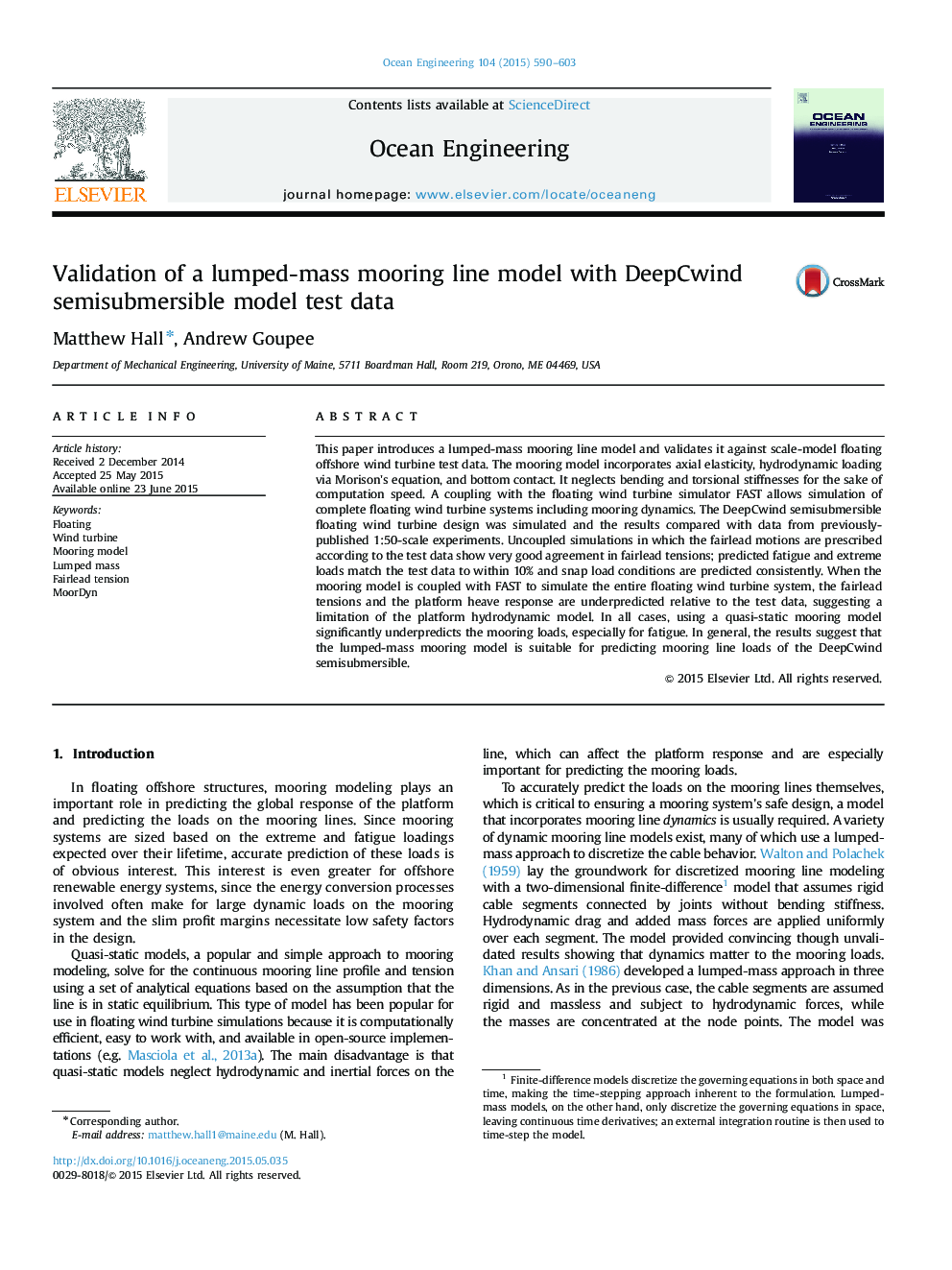| Article ID | Journal | Published Year | Pages | File Type |
|---|---|---|---|---|
| 1725384 | Ocean Engineering | 2015 | 14 Pages |
Abstract
This paper introduces a lumped-mass mooring line model and validates it against scale-model floating offshore wind turbine test data. The mooring model incorporates axial elasticity, hydrodynamic loading via Morison׳s equation, and bottom contact. It neglects bending and torsional stiffnesses for the sake of computation speed. A coupling with the floating wind turbine simulator FAST allows simulation of complete floating wind turbine systems including mooring dynamics. The DeepCwind semisubmersible floating wind turbine design was simulated and the results compared with data from previously-published 1:50-scale experiments. Uncoupled simulations in which the fairlead motions are prescribed according to the test data show very good agreement in fairlead tensions; predicted fatigue and extreme loads match the test data to within 10% and snap load conditions are predicted consistently. When the mooring model is coupled with FAST to simulate the entire floating wind turbine system, the fairlead tensions and the platform heave response are underpredicted relative to the test data, suggesting a limitation of the platform hydrodynamic model. In all cases, using a quasi-static mooring model significantly underpredicts the mooring loads, especially for fatigue. In general, the results suggest that the lumped-mass mooring model is suitable for predicting mooring line loads of the DeepCwind semisubmersible.
Keywords
Related Topics
Physical Sciences and Engineering
Engineering
Ocean Engineering
Authors
Matthew Hall, Andrew Goupee,
